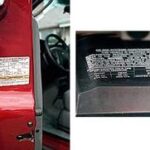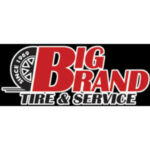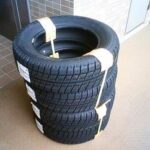Winter car maintenance is not just something you do in the middle of fall. New car owners frequently forget that automotive cold weather maintenance is actually a weekly necessity that ensures the safety of the ride as well as its continued functionality. No car maintenance checklist should be without these 10 line items.
- Tire chains. Do you know how to install them? Do you know how to take them off? Driving with tire chains when there is no snow damages your tires. Installing them incorrectly is just as bad. By the way, did you know that tire chains wear out? Inspect your tire chains after each use to make sure they are ready for the next storm.
- Tire pressure. Cold weather compresses air and slightly flattens your tires. If they are already low on air, prepare yourself for an uncomfortable ride that may shorten the tires’ lifespan to boot. You already know that proper tire inflation saves you money on gasoline; now be sure to also do it in winter for the longevity of the tires.
- Gas tank. Fill up your tank whenever possible. Allstate warns that gas lines freeze up if the tank is less than half-full.
- Windshield wipers. You changed the wiper blades as soon as summer was officially over. Great! Now carry an extra set of blades in your trunk to change them after an icy windshield causes some rips and tears in the material. Even if you use an ice scraper, there will still be enough ice on the windshield to damage the blades.
- Washer fluid. Help your wipers by filling the windshield washer reservoir with equal parts of cold-weather windshield wiper fluid and water. The mix does not ice up on the windshield and helps to remove the scratchy ice.
- Oil. If you are a novice owner, you may not want to change the oil yourself. Discuss the use of a special blend of low-temperature oil with your mechanic. If you notice that the engine sounds differently, go back to the mechanic. Learn the types of noises that are normal for the engine; of course, it is also a good idea to discover the types of sounds that warn you of developing problems.
- Battery charger. The dead battery is the quintessential problem a driver faces in winter. Experts at Interstate Batteries explain, “Your vehicle’s battery loses 33 percent of its power when the temperature dips below freezing, and over 50 percent of its power when the temperature falls below zero.” A fully charged battery is protected against freezing even if temperatures fall below minus 75 degrees Fahrenheit. So go ahead and use a battery charger consistently.
- Battery inspection. Check your battery connectors for a powdery substance. White or yellow in color, it is a warning sign of corrosion. Clean it up with a stiff-bristle brush.
- Radiator inspection. Do you have a hydrometer? If not, take your car to a shop where the experts can check the coolant strength. AAA recommends that the protection should be valid for at least minus 36 degrees Fahrenheit.
- Winterization. When I took a Datsun 280 ZX from sunny Southern California to the depths of the Colorado winter in the Rockies, it died a slow death. Nobody told me to have the car winterized to change fluids and add some hardware for the new environment. If you are doing something similar this year, please learn from my mistake.





